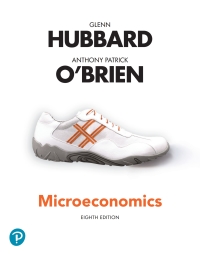Spotify and Apple Music both charge $9.99 per month for unlimited music streaming. Spotify introduced a reduced
Question:
Spotify and Apple Music both charge $9.99 per month for unlimited music streaming. Spotify introduced a reduced price of $4.99 for college students, which after a delay Apple decided to match. In an attempt to attract more college students away from Spotify, Apple decided to allow students to receive the discount for four years, rather than for just one year, as Spotify does. Spotify then decided to match Apple by also allowing students to receive the discount for four years. Construct a payoff matrix for Apple Music and Spotify, using the following hypothetical information:
• If neither firm offers a college student discount, each firm earns a profit of $7 million per month.
• If both firms offer a college student discount, each firm earns a profit of $5 million per month.
• If Apple Music offers a college student discount and Spotify doesn’t, Apple Music earns a profit of $9 million, and Spotify earns a profit of $4 million.
• If Spotify offers a college student discount and Apple Music doesn’t, Spotify earns a profit of $9 million, and Apple Music earns a profit of $4 million.
a. If Apple Music wants to maximize profit, will it offer a college student discount? Briefly explain.
b. If Spotify wants to maximize profit, will it offer a college student discount? Briefly explain.
c. Is there a Nash equilibrium to this game? If so, what is it?
Step by Step Answer:






